Problems with cell count and milking taking too long were the catalyst for Tony Duggan to do something with his milking parlour.
The dairy farmer based at Loughloher, near Cahir in Co Tipperary, was milking his 100 cows in a six-unit double-up. The double-up plant was put in about 15 years ago.
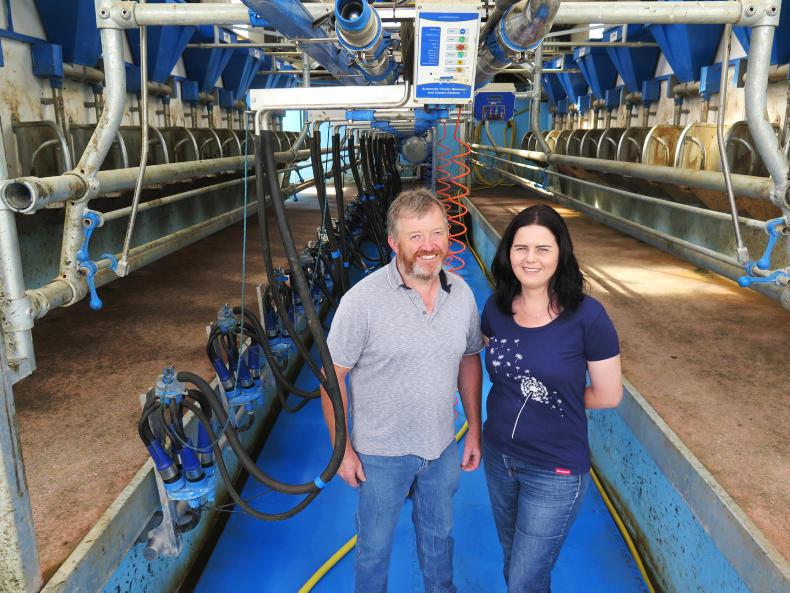
Tony and Catherine Duggan in their new milking parlour.
“I should have done then what I have done now. I wasn’t even going to do as much as we did, but we did it right and it needed to be done,” Tony says.
The new 14-unit Dairymaster plant sits into the same footprint as the old parlour, only it is longer. The new parlour was installed last winter and this is Tony’s first season milking in it.
“It’s brilliant. I go milking now to get a rest and there is no pressure at all. I can get the cows milked in little over an hour in the evenings.
It takes a little longer in the mornings and I spend a bit longer washing up than I used to but I enjoy milking again and my drive for dairy farming is back,” Tony says.
Work started when the cows were dried off on 5 December last year. The old plant was ripped out, the round roof was taken off the parlour and one of the side walls was knocked.
The old building was too wide as there was a passage in front of the meal trough for feeding meal. The dairy is situated to the front of the parlour and this wasn’t touched.
After the roof was taken down, the extension to the pit was dug along with the foundations for the new walls.
A full new wall was built along one side, with an extension to the existing wall built along the other. The old roof was too low.
Tony says he considered keeping the existing roof, but the feeders would have been very low and the whole thing would be very cramped.
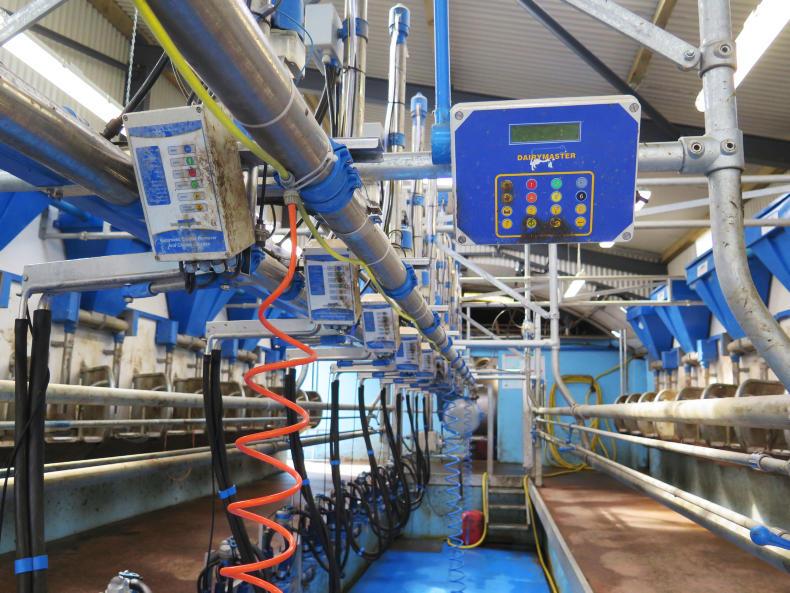
Automatic meal feeders allow meal to be fed down to 0.1kg/cow.
The walls and the pit were shuttered. The floors were poured and some of the uprights for the stall work were stood before the new roof went back on. The concrete work was completed by local man Kevin Byron.
“It was a good winter to do work. There were no hard frosts which was good as it meant we could keep working.
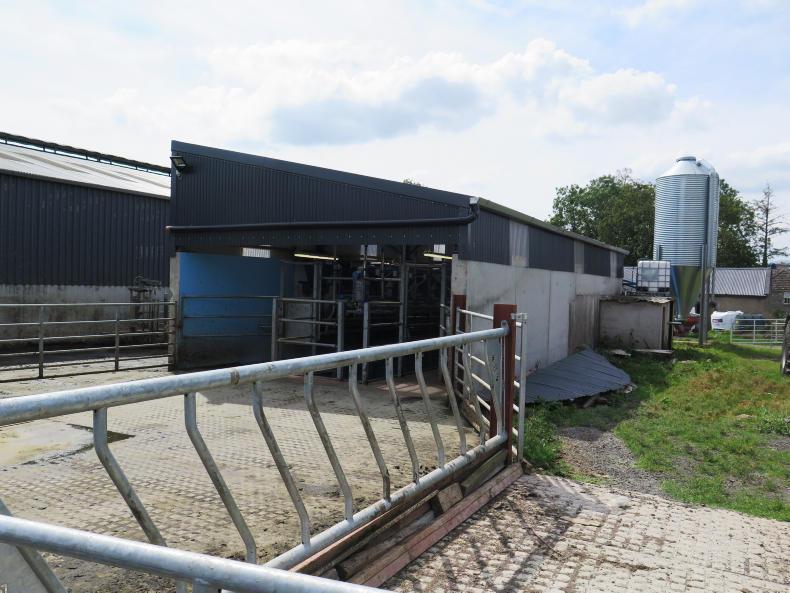
The roof was replaced and the parlour extended to accommodate the extra units.
"Not all of the concrete work was done by Christmas though, and this was a bit of a worry because the quarries in this area all shut down for nearly two weeks at Christmas,” Tony says.
The new shed is a lean-to style and is just bolted on to the wall. This is important as it means the builder could get the walls built without waiting for the shed to arrive.
When the walls were built, it meant the stall work can start to be erected. The roof was engineered and erected by Loughryan Engineering. It marries into the old shed just over the wall separating the dairy from the milking area.
Plant
Cell count was a major problem in 2018. At times, it was over 400,000, even though Tony says the filter sock was clean and cows were not getting high levels of clinical mastitis.
The old machine was testing OK, but Tony says it was only when it was taken down that they noticed the milk line was damaged.
The water pipe running alongside the milk line had previously frozen and caused the milk line to buckle.
The cell count problem was demoralising, so Tony was adamant that there wouldn’t be problems with the new plant.
Automatic cluster removers and cluster flush were installed. Tony also installed Milk Rite shells which have triangular liners rather than the standard cylindrical liners.
An automatic wash unit was installed along with a Dairymaster automatic feeding system and front and back air gates.
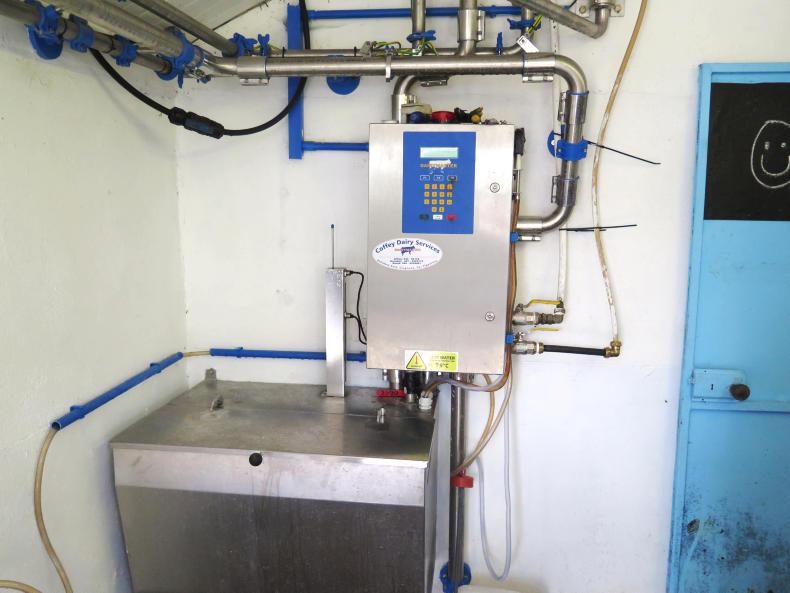
The automatic wash unit replaced the old wash troughs.
The plant was installed by local Dairymaster dealer Brendan Coffey.
There was already a slatted tank in the old collecting yard and this was back far enough to allow the parlour to be extended.
The straight rails from the old parlour were used to fence around the extended collecting yard which also has a feed barrier so silage can be fed to cows while they’re waiting to milk, if necessary.
About one-third of the yard is hosed down at the end of milking, with the remainder scraped into the slatted tank by the tractor.
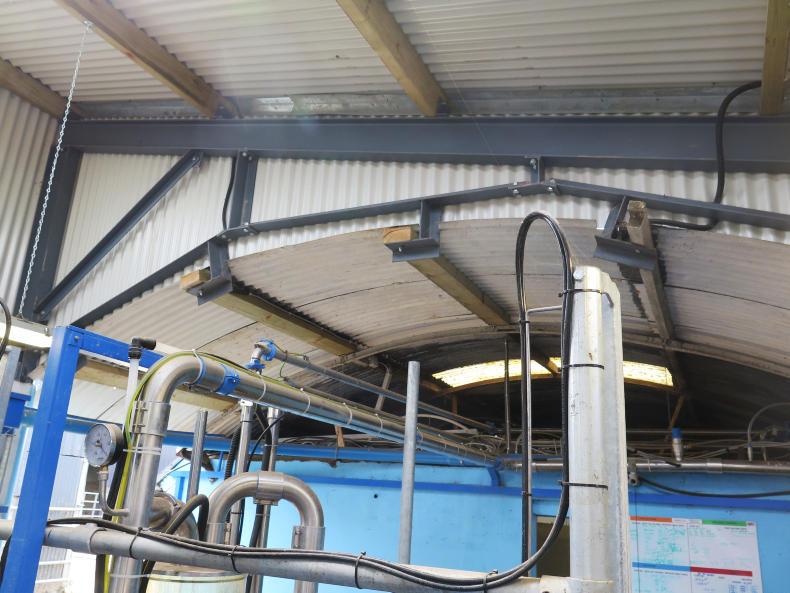
The finish is excellent throughout.
Tony says the one thing he would do differently if he was doing it again is to extend a channel out from the slatted tank, meaning more of the yard would be slatted and it would make cleaning easier.
The dairy was more or less untouched, except for the removal of the old wash troughs and the addition of the automatic washer, cluster flush machine and air compressor for the air gates and air purge.
Tony paid €70,700 for the plant. The builder cost €11,000, which includes the use of a track machine. The concrete cost €7,439.
The new shed cost €10,000 and the electrician cost €4,000. All of these costs were excluding VAT and before the TAMS grant of €25,000 was claimed.
Tony says that the total cost came to around €105,000 before VAT, when things such as the parlour mats, paint and other bits and pieces are included. He did the plumbing himself.
On a per-unit basis, the plant cost €5,050 excluding VAT per milking unit. As a rough guide, a basic plant without cluster removers or any other extra technology will cost about €2,000 per unit.
The extras in Tony’s case were the automatic cluster removers, cluster flush, automatic wash and the Dairymaster automatic feed system.
“The latest SCC is 137,000, so that’s a huge weight off my mind. I enjoy milking cows again and it’s no problem get a relief milker if we want to go away for the weekend,” Tony says.
Read more
Polytunnel housing for calves
Dairy management: soil temperatures to boost growth
Problems with cell count and milking taking too long were the catalyst for Tony Duggan to do something with his milking parlour.
The dairy farmer based at Loughloher, near Cahir in Co Tipperary, was milking his 100 cows in a six-unit double-up. The double-up plant was put in about 15 years ago.

Tony and Catherine Duggan in their new milking parlour.
“I should have done then what I have done now. I wasn’t even going to do as much as we did, but we did it right and it needed to be done,” Tony says.
The new 14-unit Dairymaster plant sits into the same footprint as the old parlour, only it is longer. The new parlour was installed last winter and this is Tony’s first season milking in it.
“It’s brilliant. I go milking now to get a rest and there is no pressure at all. I can get the cows milked in little over an hour in the evenings.
It takes a little longer in the mornings and I spend a bit longer washing up than I used to but I enjoy milking again and my drive for dairy farming is back,” Tony says.
Work started when the cows were dried off on 5 December last year. The old plant was ripped out, the round roof was taken off the parlour and one of the side walls was knocked.
The old building was too wide as there was a passage in front of the meal trough for feeding meal. The dairy is situated to the front of the parlour and this wasn’t touched.
After the roof was taken down, the extension to the pit was dug along with the foundations for the new walls.
A full new wall was built along one side, with an extension to the existing wall built along the other. The old roof was too low.
Tony says he considered keeping the existing roof, but the feeders would have been very low and the whole thing would be very cramped.

Automatic meal feeders allow meal to be fed down to 0.1kg/cow.
The walls and the pit were shuttered. The floors were poured and some of the uprights for the stall work were stood before the new roof went back on. The concrete work was completed by local man Kevin Byron.
“It was a good winter to do work. There were no hard frosts which was good as it meant we could keep working.

The roof was replaced and the parlour extended to accommodate the extra units.
"Not all of the concrete work was done by Christmas though, and this was a bit of a worry because the quarries in this area all shut down for nearly two weeks at Christmas,” Tony says.
The new shed is a lean-to style and is just bolted on to the wall. This is important as it means the builder could get the walls built without waiting for the shed to arrive.
When the walls were built, it meant the stall work can start to be erected. The roof was engineered and erected by Loughryan Engineering. It marries into the old shed just over the wall separating the dairy from the milking area.
Plant
Cell count was a major problem in 2018. At times, it was over 400,000, even though Tony says the filter sock was clean and cows were not getting high levels of clinical mastitis.
The old machine was testing OK, but Tony says it was only when it was taken down that they noticed the milk line was damaged.
The water pipe running alongside the milk line had previously frozen and caused the milk line to buckle.
The cell count problem was demoralising, so Tony was adamant that there wouldn’t be problems with the new plant.
Automatic cluster removers and cluster flush were installed. Tony also installed Milk Rite shells which have triangular liners rather than the standard cylindrical liners.
An automatic wash unit was installed along with a Dairymaster automatic feeding system and front and back air gates.

The automatic wash unit replaced the old wash troughs.
The plant was installed by local Dairymaster dealer Brendan Coffey.
There was already a slatted tank in the old collecting yard and this was back far enough to allow the parlour to be extended.
The straight rails from the old parlour were used to fence around the extended collecting yard which also has a feed barrier so silage can be fed to cows while they’re waiting to milk, if necessary.
About one-third of the yard is hosed down at the end of milking, with the remainder scraped into the slatted tank by the tractor.

The finish is excellent throughout.
Tony says the one thing he would do differently if he was doing it again is to extend a channel out from the slatted tank, meaning more of the yard would be slatted and it would make cleaning easier.
The dairy was more or less untouched, except for the removal of the old wash troughs and the addition of the automatic washer, cluster flush machine and air compressor for the air gates and air purge.
Tony paid €70,700 for the plant. The builder cost €11,000, which includes the use of a track machine. The concrete cost €7,439.
The new shed cost €10,000 and the electrician cost €4,000. All of these costs were excluding VAT and before the TAMS grant of €25,000 was claimed.
Tony says that the total cost came to around €105,000 before VAT, when things such as the parlour mats, paint and other bits and pieces are included. He did the plumbing himself.
On a per-unit basis, the plant cost €5,050 excluding VAT per milking unit. As a rough guide, a basic plant without cluster removers or any other extra technology will cost about €2,000 per unit.
The extras in Tony’s case were the automatic cluster removers, cluster flush, automatic wash and the Dairymaster automatic feed system.
“The latest SCC is 137,000, so that’s a huge weight off my mind. I enjoy milking cows again and it’s no problem get a relief milker if we want to go away for the weekend,” Tony says.
Read more
Polytunnel housing for calves
Dairy management: soil temperatures to boost growth









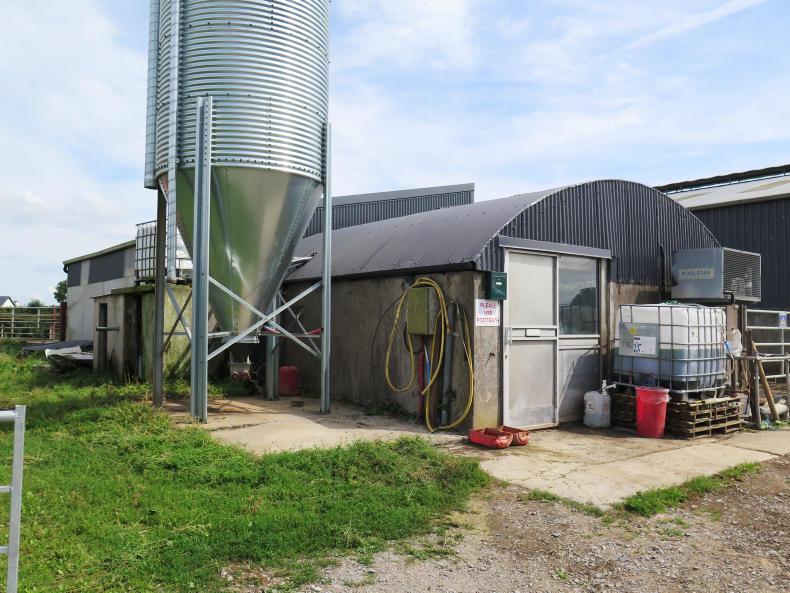
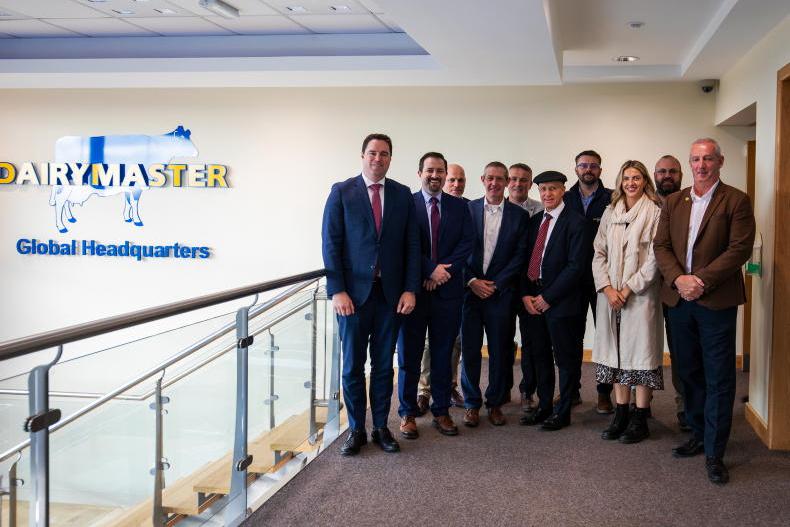

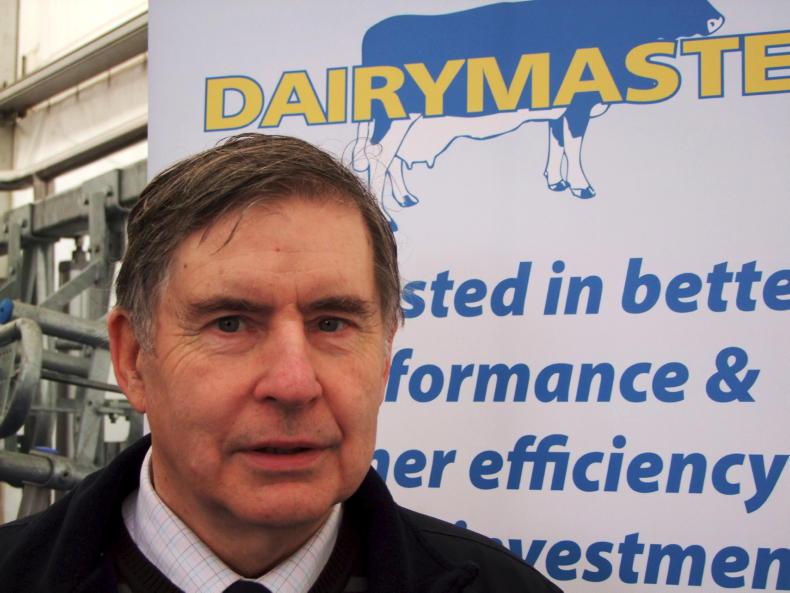
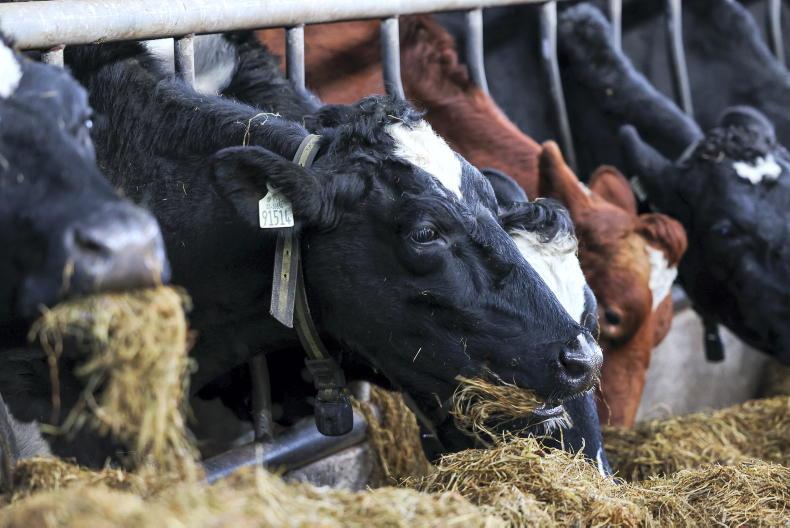
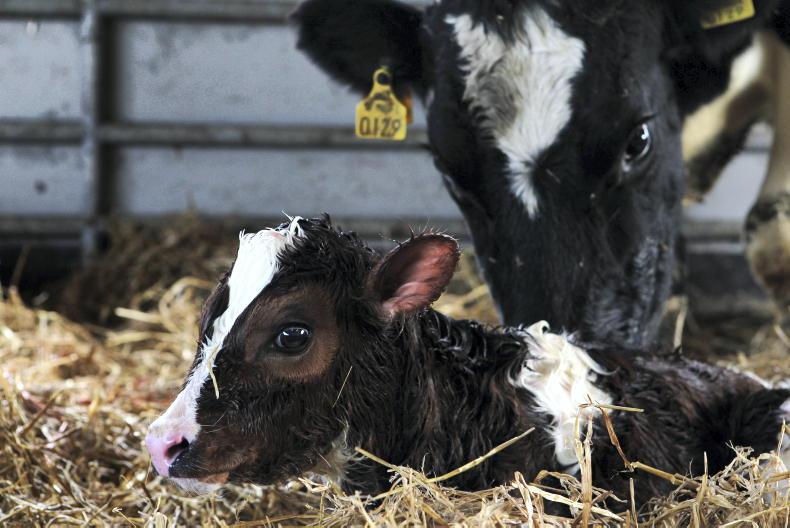
SHARING OPTIONS